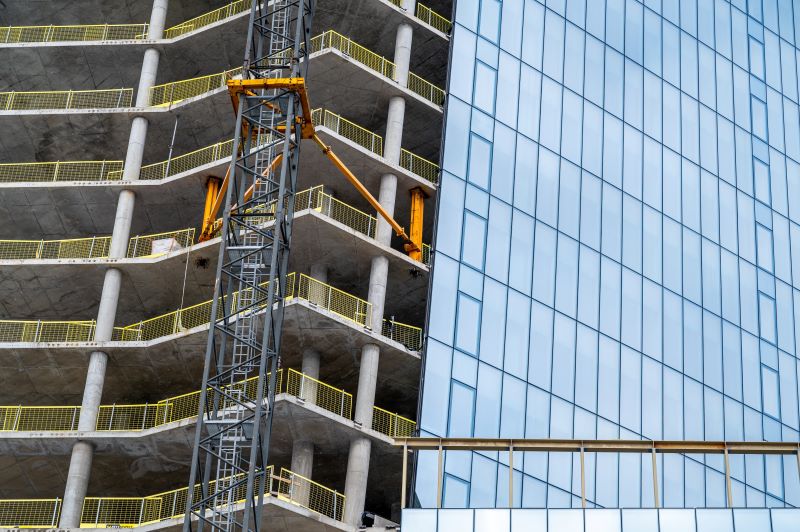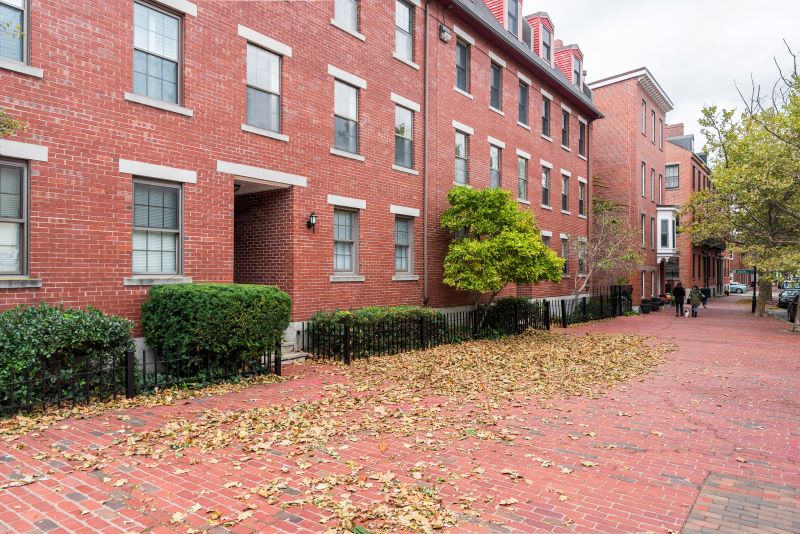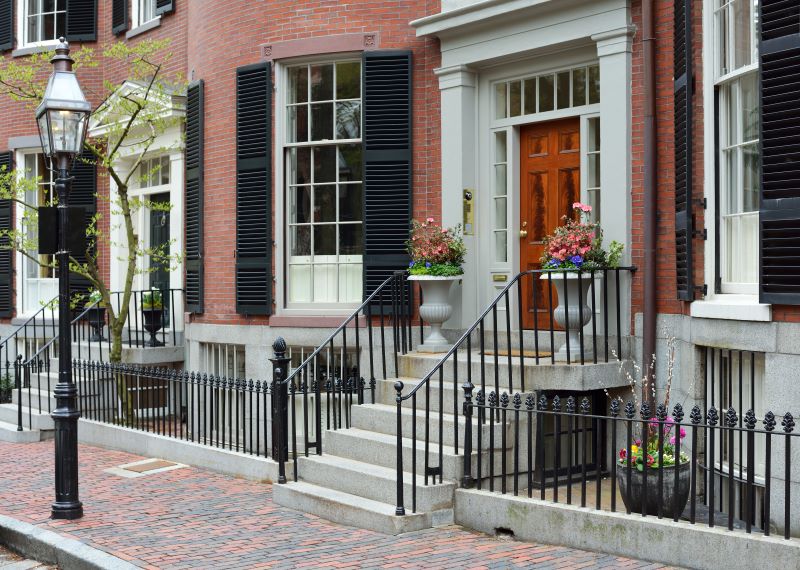
Being the local leader in real-time apartment data in Boston, we’ve looked at many different ways of assessing the overall health of the local rental market. Over the years we’ve analyzed and reported on numbers such as average rent prices, average time on market, price per square foot, vacancy rates, and more. Throughout years and years of analysis, we’ve come to find that there are two indicators that are most reliable when it comes to assessing overall rental market health: Real-Time Vacancy Rate (RTVR) and Real-Time Availability Rate (RTAR).
What is the Difference Between Real-Time Vacancy Rate (RTVR) and Real-Time Availability Rate (RTAR)?
Real-Time Vacancy Rate (RTVR) is the percentage of apartments that are available now and are empty without tenants. Real-Time Availability Rate (RTAR) is the percentage of apartments that are available now PLUS those becoming available in the future. Therefore, the aggregate percentage found in the Real-Time Vacancy Rate (RTVR) will always be lower than the Real-Time Availability Rate (RTAR). Using RTAR you can also predict the market direction in Boston with much more confidence by looking forward up to nine months or longer in certain neighborhoods.
Low RTVR will often trend along with low RTAR but can diverge and show future strength or weakness coming to a specific rental market. Greater Boston has a significant amount of rental product made available for rent many months in advance of the expiration of the lease. In fact, some apartments often come to market for rent as far as almost one year in advance. The long notification lead times that are used in Boston to get properties rented have been optimized over many decades to match how the local Colleges and Businesses efficiently operate around a university and technology driven city. Each Year 64-72% of apartment leases expire on 8/31 at midnight, but those same properties are often rented six-nine months or more in advance.
Boston Real-Time Vacancy Rate (RTVR)
Real-Time Vacancy Rate (RTVR)
Total Number of Apartments in Bostonpads.com Database / Total Number of Vacant Apartments = Real-Time Vacancy Rate
The Real-Time Vacancy Rate (RTVR) does in fact measure vacancy, but only in the present moment. It will tell you exactly what percentage of apartments are empty right now and available to move in right away. In a healthy rental market such as Greater Boston, this number nearly always is 3% or lower. Currently the RTVR is at one of the lowest percentages we have ever seen which is 0.77% and this means that we are experiencing an incredibly tight rental market where rents can continue to climb.
With a 0.77% vacancy rate, landlords should not be vacant under almost every circumstance. With an incredibly tight rental market such as Boston that has severely limited inventory primarily due to the difficult hurdles of zoning and neighborhood groups, having a vacant apartment mostly shows the apartment is either overpriced or in need of renovation and/or repairs. Landlords try to avoid vacancies at all costs as it wreaks havoc Net Operating Income (NOI).
Ideally, nearly all landlords try to fill a unit right after the previous tenant ends their lease. It doesn’t work out like this 100% of the time, but when housing is in high demand, it becomes much easier for landlords to keep their units filled. Any landlord that is currently experiencing a vacant apartment should consider discussing options with us to develop a cohesive 100% occupied apartment strategy. Our advanced system of property management nearly always guarantees full occupancy at all times because real time rent indicators are applied to the specific unit and neighborhood coupled with leasing renewal dates to create the best outcome.
The Impact of Real-Time Vacancy Rate on Rent Prices
A properly priced vacant apartment in the Greater Boston Area should always rent within two weeks if the RTVR is under the 3% threshold. While the time to rent a property will vary based on neighborhood, condition of unit, weather and time of year, the overall mathematical principle remains true. A properly priced vacant apartment should nearly always rent within two weeks. The key is having enough data points to provide correct rental comparisons to optimize the process and be helpful to both landlords and consumers. Often times the difference between success and failure of renting an apartment can be as tight as $25 per month. It’s important to get as much data as possible to set your proper pricing. A leasing professional that has the best real time data can help price out strategies for you to avoid vacancies.
In a healthy Boston market, RTVR will hover between 2-4%, meaning 96-98 out of 100 apartments will be occupied and therefore only 2 to 4 out of 100 will be available for immediate move-in. The national average for vacancy rate is currently 7%.
In Boston, our figure is nearly always much lower, and our data suggests it has been this way for over one decade, on account of high demand, incredibly low new supply, and a constant influx of new residents both national and international.
Lower Real-Time Vacancy Rates (RTVR) put upward pressure on rent prices. This is why rent in Boston has soared to record highs over the past few years. Until Greater Boston figures out a way to produce about 30,000 units per year to match population growth and the draw of the city, expect prices to stay high and the RTVR to stay low. You can also expect further development on the edges of the city and surrounding towns near transportation hubs to accelerate when the price per square foot for land acquisition costs becomes disparate enough compared to traditional core Boston areas. As rents rise in the surrounding suburbs expect to see more development shift in those directions.
Boston Real-Time Availability Rate (RTAR)
Real-Time Availability Rate (RTAR)
(Total Number of Currently Vacant Apartments + Total Number of Apartments Becoming Available in the Future) / Total Number of Apartments = Real-Time Availability Rate
The Real-Time Availability Rate (RTAR) goes a step further at giving us future indicators of the economy and absorption of units. It’s a snap shot of what is coming, and for property owners with larger portfolios, they can start making proactive adjustments to rent pricing based on future data. RTAR takes the total number of apartments that are vacant right now, plus all of the apartments that are becoming vacant in the future, and divides that number by the total number of apartments.
This gives us a snapshot of the total percentage of apartments that will become available in the near future. Historically the (RTAR) that we have tracked will vary from 2% – 6.5% depending on the time of year and other factors. If we saw an (RTAR) greater than 7% it would be cause for concern of pricing power. If we see a RTAR higher than 4 percent going into August it can signal a potentially weakening market.
In any event, unrented units going into August generally start to see an erosion in pricing power, as many landlords decrease rental prices weekly in August to avoid vacancy. Experience through monitoring web traffic has indicated as high as an 80% decrease in apartment searches after 8/15 each year. Therefore it is important that landlords follow best practices based on the advice provided through the introspection of the data and competition currently in their marketplace. For best apartment leasing strategies; please feel free to consult our team on the best course of action for your portfolio. Not all leasing or property management companies spend the time or money to properly analyze a property owners portfolio.
Our current RTAR is 1.15% which looks to be very tight considering we are in the second week of October. We expect this number to stay in this range and under 2% until at least January 1st,2024. Stay tuned for future updates.
Effects On the Apartment Rental Market
The RTAR gives us not only an accurate snapshot of current market conditions, but it also predicts where the market is headed in the future. If we notice a low or average RTAR, but a higher than normal RTVR, we know that the apartment rental market could be in store for a correction. Conversely, a low RTAR combined with a low RTVR is a solid indicator that the market is strong, demand is high, and conditions should stay favorable for at least the foreseeable future. Currently we have both the RTVR and the RTAR at very low levels. Despite rampant inflation and the ever looming threat of recession; we just haven’t seen the layoffs that nearly everyone predicted would arrive in 2023.
Considering that development costs have shot through the moon through high energy costs and politicians demanding greater green and affordability requirements – it is no small wonder that our construction pipeline is dwindling at a rapid pace. With lower permits on the horizon – you can expand demand to stay strong and prices to stay high until we rapidly produce more product. I wouldn’t hold my breath. Sadly only looming job cuts could force apartment rental pricing down. Labor, insurance, electricity, water and maintenance costs are also outpacing rent growth so landlords are facing daunting times even as rental prices go up.
This is the reason we developed the “Real-Time Availability Rate”. Landlords care much more about the future and current state of the market than past history. It’s important for property managers to consider both of these metrics. They give you a snapshot of not just present numbers, but also future conditions.
These two data points provide us with a majority of the information we need to assess the apartment market in Boston. When the market sustains low combined RTAR an RTVR, there is strong historical evidence of high demand and low supply. Econ 101 teaches us that landlords will raise their prices upward.
Here in Boston, we’ve seen extraordinarily low RTAR and RTVR over the past 8 years. During that time-span, rent prices have steadily climbed, overall inventory has still grown, and demand has never failed to match the growing supply. Because of this, Boston has become one of the fastest growing, highest rents and lowest vacancy rate real estate markets in the country.
Sharing Our Apartment Data With You
Here at Boston Pads, we’ve recently built an internal real-time data feed broken down by neighborhood that captures both of these data points for both RTAR and RTVR. We’ve done this for not only Greater Boston as a whole, but every micro-market and neighborhood in and around the Greater Boston Area. We have over 208,000 apartments in our real-time database and it provides a wealth of data that can be analyzed to help predict market trends and make informed decisions at the most minute levels. This allows us to report on data at a granular level, providing local insights that no other player can give, local or national. Our software also has a litany of other key leading indicators that landlords can log in and view to make empowering decisions.
If you would like to log into our Property Owner Portal (POP) you can manage your portfolio from there and have the best leasing agents in Boston help you get better rents and the most highly qualified clients in the shortest period of time. Our POP has been a game changer for the numerous landlords looking to save time and have the most professional experience in apartment leasing in the industry.
Stay tuned to our blog and our network of 80 local websites for more detailed analysis of vacancy rates for nearly every local area in Greater Boston. If you’re a landlord in the Greater Metro Boston Area, be sure to list your apartment with us if you haven’t already. Once you do, you’ll have on-demand access to all of this data and the most powerful marketing tools available, saving you time and maximizing your revenue.
Demetrios Salpoglou
Published October 9, 2023
Demetrios has pulled together the largest apartment leasing team in the Greater Boston Area and is responsible for procuring more apartment rentals than anyone in New England – with over 130k people finding their housing through his services. Demetrios is an avid real estate developer, peak performance trainer, educator, guest lecturer and motivational speaker.








